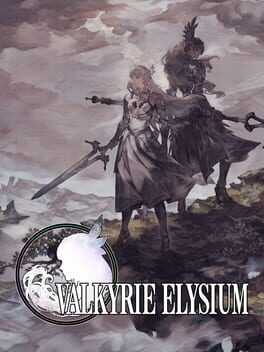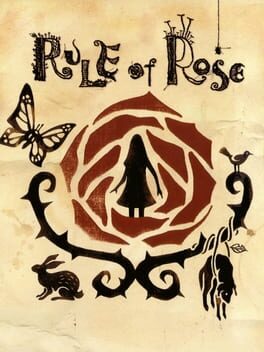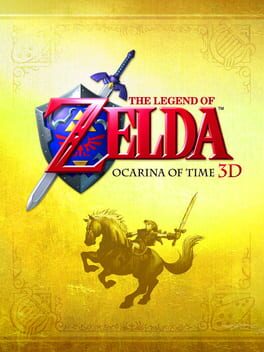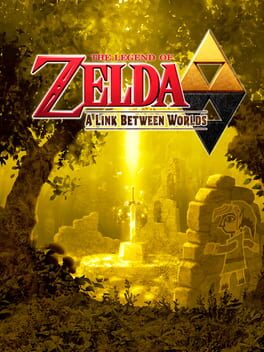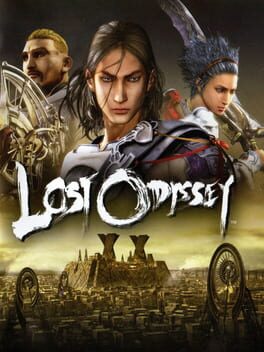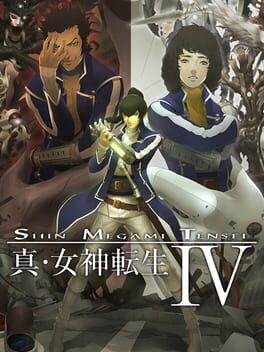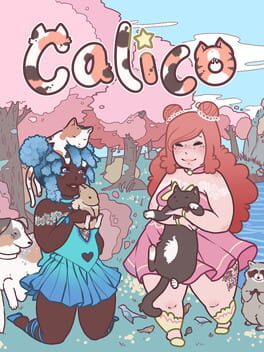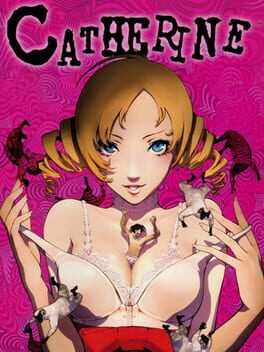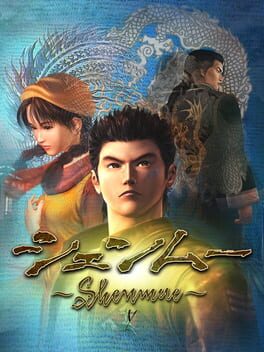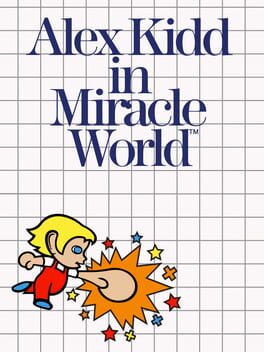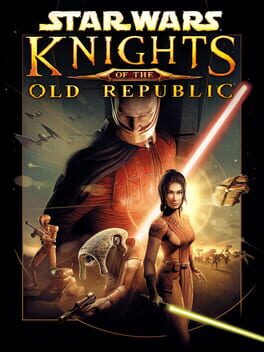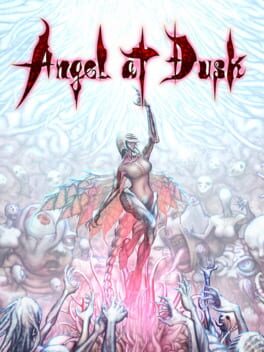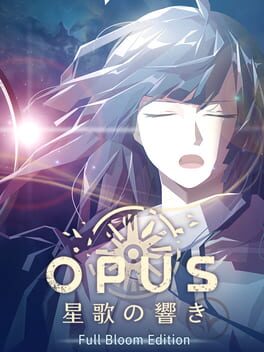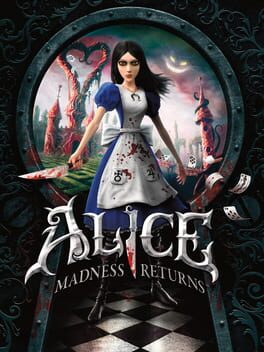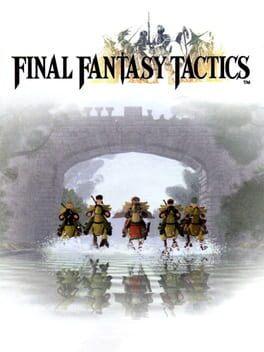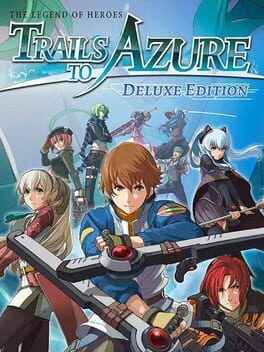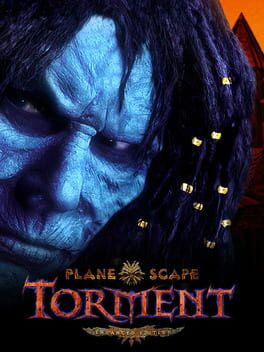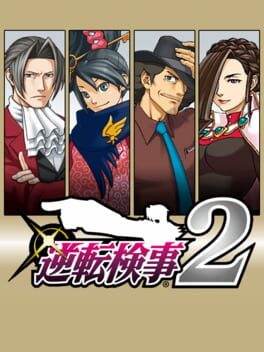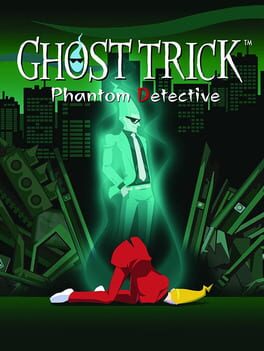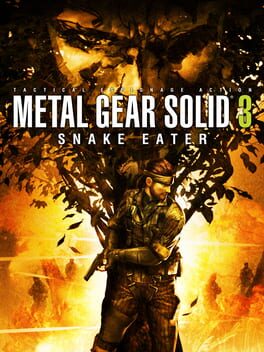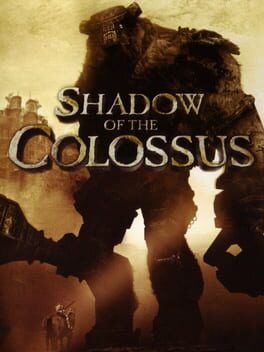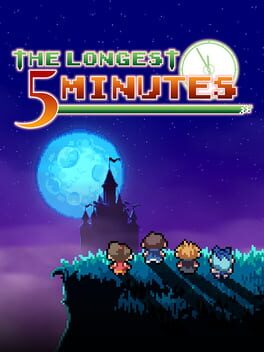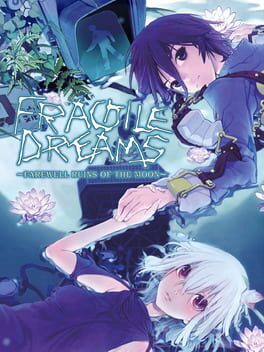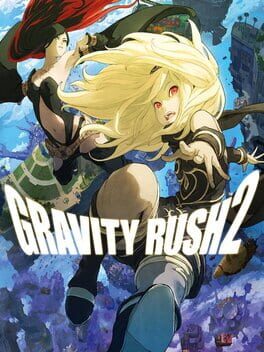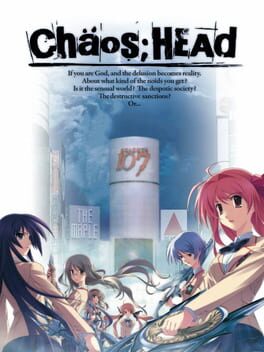SilentiousBeing
25 reviews liked by SilentiousBeing
Sonic Frontiers
2022
Valkyrie Elysium
2022
Having gone through all the endings and hard mode, I can say that this game is really fun. Despite lacking enemies and very few interesting locations, I was never bored with the gameplay. But the story feels like a big after thought. Thankfully its not a long game - it just falls short of being an impressive one.
Rule of Rose
2006
Rule of Rose is a game about pain, or, more specifically, about learned helplessness. Its theme song, “A Love Suicide,” really contains all the themes therein. Presented as a melodramatic lounge torch song, you could venture to say it feels manically out of line with the type of game Rule of Rose is. It’s a survival horror game in the vein of Resident Evil or, perhaps more accurately, Silent Hill. It has a lock-and-key sort of progression with you running about a confined location and seeking out items that help you move along to the next section.
If made today, or honestly, if it hadn’t been specifically commissioned by Sony, this would have been an adventure game. Punchline is, after all, a studio made up of remnants of Love-de-Lic. This is the team that made Chulip. I can’t confidently say if Rule of Rose would be a better game sans combat, but its combat certainly didn’t win it any points with mainstream publications at the time. More on that later. Back to the theme song.
The shock factor of “A Love Suicide” and its lyrical contents deem the game as one going for pretty stark punches. Themes of masochism are laid like a gossamer sheet over an aesthetic of prim schoolgirls. The croon of Kaori Kondo’s contralto toes the line between the masculine and feminine. It implies a certain brutality that will be embarked on upon the game’s start. If anything, though, “A Love Suicide” is more shockingly honest about what lies ahead than cheap or in poor taste.
Musically, the game plays with these sort of lounge-y, ballroom sounds. Violin, cello, and piano dominate Yutaka Minobe’s soundtrack. The melody of “A Love Suicide” is shared with several tracks that play throughout the game, and is featured prominently in rearranged forms. It immediately recalls the Caretaker’s “An Empty Bliss Beyond This World.” Ideas of cultural memory and emergent nostalgia are curried up. The music occasionally seems positioned as if coming from another room, or another chamber, and the familiar tune that permeates throughout the soundtrack is a throughline for what seems like something important, something worth paying attention to.
This is a game about masochism. That’s a type of pain, and a type of love—an unrequited relationship in which someone hurts another, and they accept it purposefully. Playing the game, at times, feels like a masochistic act. Combat is clunky and unfair. Jennifer will plummet to the ground and receive damage the moment she stands up without a chance of recovery. No weapon truly feels better than another to use, no matter how improvised. The weapons themselves feel like cruel jokes—your first is not only a fork instead of a knife, but the smallest type of fork. Jennifer struggles to wield any of them and covers her face when she swings her big metal pipe. Health items are limited and require intense scrounging to find. There’s little rhyme or reason to their effect—why would a lollipop heal more than a biscuit? Isn’t a biscuit more substantial?
You don’t have to fight that much in Rule of Rose, though. There’s only 3 bosses. You can run away most of the time, which feels more in line with what Jennifer, who is directly teased for being a coward, would do. Other than that, you have a dog named Brown with you. He can find stuff by setting an item for him to investigate. This is where the main progression of the game comes in—each chapter, you are tasked with finding some kind of item to return and give to a group of evil little girls named the Red Crayon Aristocrat Club. What follows is essentially a trail of breadcrumbs laid out for you to flit from one horror to the next. These segments correlate directly with demented little scrawled fairytales you find lying around made with scrap paper.
This is where the vibes come in, really. The FMVs have a sort of giallo charm to the bombast of some of the images but the uncanniness of being grounded in some reality. They end abruptly and carry a dizzying sense of cruelty with each. This game is not that graphic with its horror, it much prefers to give a creeping sense of dread or to unsettle you with uncomfortable situations, but it is very bold with its depictions of animal cruelty, of which there is a pretty hefty amount of. The story itself could not work without this and in fact hinges pretty heavily on this idea, of doing something terrible to something that can’t defend itself or is afraid.
It has some elements of Edward Gorey to it, but I think more than anything the game reminds me of shoujo and josei manga. The melodramatic and psychosexual moments of Moto Hagio are here. The game does not assume its audience is male—in fact, I think women and queer people would get a lot more out of this. The true horror at the center of the story is innately female. The fear of growing up, romantic feelings, the ephemerality of beauty, and gender expression are all here. The game is explicitly lesbianistic in a sensitive, non-pandering way. It also obviously has this veneer of rose petals and boarding schools laid overtop it to really seal what I would call the closest thing to a Year 24 Group video game. I also can’t help but think of Peter Jackson’s Heavenly Creatures sometimes. I also wouldn't be shocked if the VIvian Girls were a touchstone.
But the cruelty. The cruelty is what is so prevalent here. This is a game about how scary it would be to be a little girl again. The marching passage of time ages you, distances you farther from your memories. You can’t disentangle yourself from the person you were as a child. That’s still you, no matter how grown up you feel—the dramaturgical era of our lives lingers, and colors how we view every social dynamic we know. The idea of receiving a cold shoulder, being ostracized, being locked in a room as a mean prank, and being rampantly bullied is the worst thing imaginable. But being abandoned is even worse. Having no one, being lonely, is worse than being a victim. I can’t claim to be an expert on post-trauma periods, but everyone here is so desperately afraid of being punished. They’re paralyzed with fear that what they do might be interpreted as insubordination, as childish, as unsophisticated, or as disobedient. But they’re all children—they should be brattish, they should be a little filthy. Why are they so afraid of what they are?
Everyone wants to imagine they are the most mature person in a room, the sanest one with their shit together. You can forgive a lot if you decide to turn a cheek and be the bigger person. As a middle schooler, I was bullied rampantly for being a sissy. I was in the closet but unsure when was a good time to come out, when other people did it. I dissociated so heavily from my bullying that I never once told my mom that anyone had said anything hurtful to me, had hit me when the teachers weren’t looking, had knocked my books out of my hand in the hallway. If I could learn to cope with the unavoidable reality of a purgatorial middle school, I could overcome it. I could grow up faster than them and make older friends and hang around people that wouldn’t hurt me. I just had to go faster. But time moves at the same speed for everyone.
I don’t think Rule of Rose is a perfect game. I think it reveals some of its feelings on fat people or the mentally disabled too readily. I do think there’s something to be said about how unreliable the narration is, and how skewed the perspective is, but it still is occasionally cheap in its coding. The game also gets a bit heavy-handed near the end where things can be neatly explained away instead of left hazily in the lurch as they maybe should have. But I do know that no other piece of media has so accurately captured the feeling of being bullied than this one. The nightmarish, tubelike airship the game takes place in feels like an inescapable trap. There’s a certain animism applied to every object in the game, as if giving them a proud dignity (or as if someone had time to make up a bunch of characters around them to feel less lonely). Perhaps most shockingly is the final scene, which brims with a cruelty far less obvious than anything else in the game. This is an exhausting game, and one that often feels like a noose. But it bubbles with empathy even for the ones who tied you up in the first place. Some of our darkest fantasies come from wishing for a better life.
If made today, or honestly, if it hadn’t been specifically commissioned by Sony, this would have been an adventure game. Punchline is, after all, a studio made up of remnants of Love-de-Lic. This is the team that made Chulip. I can’t confidently say if Rule of Rose would be a better game sans combat, but its combat certainly didn’t win it any points with mainstream publications at the time. More on that later. Back to the theme song.
The shock factor of “A Love Suicide” and its lyrical contents deem the game as one going for pretty stark punches. Themes of masochism are laid like a gossamer sheet over an aesthetic of prim schoolgirls. The croon of Kaori Kondo’s contralto toes the line between the masculine and feminine. It implies a certain brutality that will be embarked on upon the game’s start. If anything, though, “A Love Suicide” is more shockingly honest about what lies ahead than cheap or in poor taste.
Musically, the game plays with these sort of lounge-y, ballroom sounds. Violin, cello, and piano dominate Yutaka Minobe’s soundtrack. The melody of “A Love Suicide” is shared with several tracks that play throughout the game, and is featured prominently in rearranged forms. It immediately recalls the Caretaker’s “An Empty Bliss Beyond This World.” Ideas of cultural memory and emergent nostalgia are curried up. The music occasionally seems positioned as if coming from another room, or another chamber, and the familiar tune that permeates throughout the soundtrack is a throughline for what seems like something important, something worth paying attention to.
This is a game about masochism. That’s a type of pain, and a type of love—an unrequited relationship in which someone hurts another, and they accept it purposefully. Playing the game, at times, feels like a masochistic act. Combat is clunky and unfair. Jennifer will plummet to the ground and receive damage the moment she stands up without a chance of recovery. No weapon truly feels better than another to use, no matter how improvised. The weapons themselves feel like cruel jokes—your first is not only a fork instead of a knife, but the smallest type of fork. Jennifer struggles to wield any of them and covers her face when she swings her big metal pipe. Health items are limited and require intense scrounging to find. There’s little rhyme or reason to their effect—why would a lollipop heal more than a biscuit? Isn’t a biscuit more substantial?
You don’t have to fight that much in Rule of Rose, though. There’s only 3 bosses. You can run away most of the time, which feels more in line with what Jennifer, who is directly teased for being a coward, would do. Other than that, you have a dog named Brown with you. He can find stuff by setting an item for him to investigate. This is where the main progression of the game comes in—each chapter, you are tasked with finding some kind of item to return and give to a group of evil little girls named the Red Crayon Aristocrat Club. What follows is essentially a trail of breadcrumbs laid out for you to flit from one horror to the next. These segments correlate directly with demented little scrawled fairytales you find lying around made with scrap paper.
This is where the vibes come in, really. The FMVs have a sort of giallo charm to the bombast of some of the images but the uncanniness of being grounded in some reality. They end abruptly and carry a dizzying sense of cruelty with each. This game is not that graphic with its horror, it much prefers to give a creeping sense of dread or to unsettle you with uncomfortable situations, but it is very bold with its depictions of animal cruelty, of which there is a pretty hefty amount of. The story itself could not work without this and in fact hinges pretty heavily on this idea, of doing something terrible to something that can’t defend itself or is afraid.
It has some elements of Edward Gorey to it, but I think more than anything the game reminds me of shoujo and josei manga. The melodramatic and psychosexual moments of Moto Hagio are here. The game does not assume its audience is male—in fact, I think women and queer people would get a lot more out of this. The true horror at the center of the story is innately female. The fear of growing up, romantic feelings, the ephemerality of beauty, and gender expression are all here. The game is explicitly lesbianistic in a sensitive, non-pandering way. It also obviously has this veneer of rose petals and boarding schools laid overtop it to really seal what I would call the closest thing to a Year 24 Group video game. I also can’t help but think of Peter Jackson’s Heavenly Creatures sometimes. I also wouldn't be shocked if the VIvian Girls were a touchstone.
But the cruelty. The cruelty is what is so prevalent here. This is a game about how scary it would be to be a little girl again. The marching passage of time ages you, distances you farther from your memories. You can’t disentangle yourself from the person you were as a child. That’s still you, no matter how grown up you feel—the dramaturgical era of our lives lingers, and colors how we view every social dynamic we know. The idea of receiving a cold shoulder, being ostracized, being locked in a room as a mean prank, and being rampantly bullied is the worst thing imaginable. But being abandoned is even worse. Having no one, being lonely, is worse than being a victim. I can’t claim to be an expert on post-trauma periods, but everyone here is so desperately afraid of being punished. They’re paralyzed with fear that what they do might be interpreted as insubordination, as childish, as unsophisticated, or as disobedient. But they’re all children—they should be brattish, they should be a little filthy. Why are they so afraid of what they are?
Everyone wants to imagine they are the most mature person in a room, the sanest one with their shit together. You can forgive a lot if you decide to turn a cheek and be the bigger person. As a middle schooler, I was bullied rampantly for being a sissy. I was in the closet but unsure when was a good time to come out, when other people did it. I dissociated so heavily from my bullying that I never once told my mom that anyone had said anything hurtful to me, had hit me when the teachers weren’t looking, had knocked my books out of my hand in the hallway. If I could learn to cope with the unavoidable reality of a purgatorial middle school, I could overcome it. I could grow up faster than them and make older friends and hang around people that wouldn’t hurt me. I just had to go faster. But time moves at the same speed for everyone.
I don’t think Rule of Rose is a perfect game. I think it reveals some of its feelings on fat people or the mentally disabled too readily. I do think there’s something to be said about how unreliable the narration is, and how skewed the perspective is, but it still is occasionally cheap in its coding. The game also gets a bit heavy-handed near the end where things can be neatly explained away instead of left hazily in the lurch as they maybe should have. But I do know that no other piece of media has so accurately captured the feeling of being bullied than this one. The nightmarish, tubelike airship the game takes place in feels like an inescapable trap. There’s a certain animism applied to every object in the game, as if giving them a proud dignity (or as if someone had time to make up a bunch of characters around them to feel less lonely). Perhaps most shockingly is the final scene, which brims with a cruelty far less obvious than anything else in the game. This is an exhausting game, and one that often feels like a noose. But it bubbles with empathy even for the ones who tied you up in the first place. Some of our darkest fantasies come from wishing for a better life.
13 Sentinels: Aegis Rim is a phenomenal game, an exceptionally unique method of delivering a story that I've never seen anything close to and probably won't again. It manages to strike a balance between the story and combat sections as well, by having smooth transitions between the two. Both modes reward the other with unlocking story sections as combat rewards or gaining upgrade points for the combat section as you complete story sections. Both modes also help filling out the lore section in their own ways too. With the combat granting you mystery points to unlock lore secrets and those said secrets get updated as you continue the story.
STORY
As said above, it's incredible. Normally a story with this many twists, turns and moving parts would be a convoluted mess. But because the game let's you digest a vast majority of it at your own pace and in your own order, it's a much better experience. There are helpful features like the lore menu, the thought bubbles let you review all details so far when you come back to a character you haven't played in a while. Same with the progression/route split map you have available to you. Showing you what path you've taken and what possiblities you have left to explore.
With 13 characters to play as, most having pretty long and branching stories. Once you get out of the prologues, it certainly gives you a bit of choice paralysis. However, once you dive in and get the ball rolling in whichever way you want, it feels much less overbearing. Everyone's order and experience will be different, for me I was just choosing whoever I felt like for a while, then toward the end I went in an order to polish every story off when they were close.
Each character story gives you glimpses into others, you get to see story events from each character's perspective and what led them there. The numerous mysteries get more and more clear with each character you play as. Something that appears mysterious in one character's story you learn about in another. There are many events and NPCs characters that act as points of consistency and familiarity between stories. So no matter what order you go in or how confusing individual stories may seem at the time, these elements keep things balanced and tethered, providing a sense of order to the chaos.
The actual main story content itself is great too, many different eras to explore and travel through, each with their own Characters and environments. Some characters are at home and comfortable in some eras, but out of their depth in others. Looming threats and mysterious plans are always lingering in the background. Each character embarking on their own journey to do their best to unravel mysteries, prevent disasters and save the people they care about. Each story converges on a final confrontation where everything and everyone comes together. There are tons of interesting concepts to explore and think about as you play the game. I was pretty much always engaged in what was going on, this game keeps the player interested perfectly due to each character story having something keeping the story fresh and individual to theat Character.
COMBAT
As I said at the beginning, the combat portion is symbiotic with the story, playing one benefits the other. There are smaller, but still kind of important story beats, mainly character interactions that occur uniquely during these combat maps. Just like with balancing each character story in the story mode, you can balance your time however you want between combat and story. Big riskier to prioritize combat as the story rewards you with a lot of upgrade points, but you could probably play combat mostly solo and do fine.
Now admittedly, the combat portion of this game is not a genre I'm familiar with. Barely even know how to properly label it, feels like a big blend of real time/turn based elements in a tower defense/mech kind of game. My poor analysis of it aside, it's pretty fun. Not super in depth, I could monkey brain through most of the maps. But the depth is there if you want to get invested. Each character has their own mech or Sentinel, and while multiple characters may share a model of Sentinel, so their core abilities and specs are the same, they each have their own individual abilities and skills to unlock to make them distinct.
Difficulty wise it felt fine overall. I played on normal, as I do almost every game for the first time and it was good. No maps were super annoying, got an S rank on a majority of maps. Only failed a couple times towards the end. Last couple maps are pretty tough, but I wasn't exactly micromanaging for the most optimal deployment roster or strategy, so someone with more patience would probably have an easier time. A couple maps lagged a slight bit on the switch version due to having tons of enemies, but it wasn't bad at all, very minor frame dropping that's it.
I definitely think the combat mode is much weaker than the story mode, but it's still good. Just isn't the most in depth or visually impressive I've seen. But I'll reiterate, it was fun. I greatly enjoyed spamming missile barrages at large groups of enemies. Very satisfying.
CHARACTERS
I love the cast of characters in this game. Didn't dislike a single one, following each of them through their own journeys and seeing how they interact with one another was great. Each character's story is unique in terms of presentation and the themes within them. Some are more linear while some are more chaotic, and these distinctions are relevant to their story and how they fit in to the overall arc.
Don't want to get too long winded, but I'll give a bit of time and thoughts to each protagonist, what I like about them and how I feel they're unique. I won't try to outline each relationship unless it's a big part I like, cause that's kind of a mess.
Juro Kurabe
Juro feels most like the "Main Character" of the story, though I don't like describing him as that. Lots of main plot stuff ties to him in big ways, and his deliberately blank and easily accommodated personality I feel makes him the best at sympathizing with the player in the aspect of "experiencing these mysteries for the first time". Like I said, this is done purposefully as it ties in to his story about memory and identity which works really well.
Iori Fuyusaka
I feel Iori's character is unique as you find out much about her in other stories, more than the other characters. Her solo story is still good, she does her best to adapt to the mysteries of the game as a seemingly normal girl and her ending I thought was pretty impressive.
Shu Amiguchi
Your standard ladies man character on the surface, his personal life has some interesting depth to it, he has some fun dynamics and he ties in importantly with some of the bigger plot elements as well, which I found quite interesting about his story.
Tomi Kisaragi
Probably toward the bottom in terms of my opinions on each character, but still great. She has a great dynamic with Nenji, probably one of my favorites in the game, and her story fits in to a few important places as well. Just didn't love her solo journey as much, though it has good moments.
Megumi Yakushiji
I think Megumi has one of the most curious stories in the game, which is saying a lot for this game. Her role felt especially mysterious and unique, even while being the most linear path of of all of them. Also she gets to talk to Fluffy who is great.
Takatoshi Hijiyama
I'll do my best to set my bias for Kaiji Tang, Hijiyama's voice actor aside. But his story is still great. He interacts with one of the most important NPCs in the game, Okino, the most out of any character. They have a great dynamic with each other, both story and entertainment wise. Hijiyama is just a personality type I really like, he's lots of fun and pretty funny and badass. His perspective as a 1945 era character is great to watch too.
Keitaro Miura
Keitaro is an interesting one, in a convoluted way he has a big presence in another story, but I won't spoil that. But in his own he's still great. A fellow 1945 fella like Hijiyama, his more reserved personality than his makes him interesting in his own way. His role and duty as a soldier of Japan bleeds in to his controlled and helpful personality.
Ei Sekigahara
Another member of the memory based story club like Juro, his story focussing on unraveling a plot with his limited memory is quite interesting. Feels like a detective story, as some others do as well. He definitely feels the most in danger along with another character, so that adds a bit of tension to his story.
Ryoko Shinonome
Might be my personal favorite, last member of the memory based story club, but man does it really hit this time. You feel the struggles she goes through with her damaged memory, I played her story kind of late in the line up, so I imagine if you do hers earlier you'll feel just as lost as she does, which is great. But what I love most is how her plot affects the players gameplay and experience. It isn't a super game changing element, but it's a constant presence that effects how you go about her story decisions. Loved that pill element a lot.
Nenji Ogata
The classic pompadour sporting delinquent, a tough guy that doesn't have too many positive relationships. But he surprisingly goes through an especially sci Fi journey. With his story primarily revolving around being stuck in a time loop. A loud mouthed delinquent was certainly not who I was expecting to go through that kind of story, but it works well. His ending is definitely one of my favorites.
Natsuno Minami
Probably my second favorite story. Natsuno is a very fun and entertaining character, and her NPC pal BJ, a robot, was great to add to her dynamic. Natsuno's already zany and sci Fi loving personality worked well as she feels the most on her own for most of her story compared to other characters. Her story has I think the best emotional moment for me as well.
Yuki Takamiya
Yuki, a no nonsense brawler tough girl, being the detective story of the game was great. I loved following her investigation, definitely a unique perspective for both the game and detective genre. Aiba, an NPC accompanying Yuki on her investigation, is really funny and has an interesting plot of her own. Yuki's dynamics with Natsuno and Shu are also great.
Renya Gouto
Renya is interesting, for everyone else you're mostly unrestricted as to when you can do their story, Renya works as the last story you experience. His plot is linear and it's mostly just typing up loose ends, but I feel he's the character that's most interesting outside of their solo mode. He's always mysterious, always has an agenda of his own and always present. Definitely wish you got to walk around with him more.
OTHER STUFF
OST, was great with some real bangers, Deoxyribose, Isoleucine and Seaside Vacation being my favorites.
Voice cast was great, played in English. Liked every voice. Kaiji Tang bias was strong with this game sorry :(
Art and designs were cool too. Loved all the main character designs and artwork.
Game's visuals were pretty cool in the environments in the story mode.
Lore/information menu is a feature I am quite thankful for, just like in Triangle Strategy.
CONCLUSION
Yeah, amazing game. Nothing was ever too messy or convoluted in the story, nothing was ever too annoying in the gameplay. Such a unique experience, definitely recommend for anyone who is interested and loves video games as a medium.
STORY
As said above, it's incredible. Normally a story with this many twists, turns and moving parts would be a convoluted mess. But because the game let's you digest a vast majority of it at your own pace and in your own order, it's a much better experience. There are helpful features like the lore menu, the thought bubbles let you review all details so far when you come back to a character you haven't played in a while. Same with the progression/route split map you have available to you. Showing you what path you've taken and what possiblities you have left to explore.
With 13 characters to play as, most having pretty long and branching stories. Once you get out of the prologues, it certainly gives you a bit of choice paralysis. However, once you dive in and get the ball rolling in whichever way you want, it feels much less overbearing. Everyone's order and experience will be different, for me I was just choosing whoever I felt like for a while, then toward the end I went in an order to polish every story off when they were close.
Each character story gives you glimpses into others, you get to see story events from each character's perspective and what led them there. The numerous mysteries get more and more clear with each character you play as. Something that appears mysterious in one character's story you learn about in another. There are many events and NPCs characters that act as points of consistency and familiarity between stories. So no matter what order you go in or how confusing individual stories may seem at the time, these elements keep things balanced and tethered, providing a sense of order to the chaos.
The actual main story content itself is great too, many different eras to explore and travel through, each with their own Characters and environments. Some characters are at home and comfortable in some eras, but out of their depth in others. Looming threats and mysterious plans are always lingering in the background. Each character embarking on their own journey to do their best to unravel mysteries, prevent disasters and save the people they care about. Each story converges on a final confrontation where everything and everyone comes together. There are tons of interesting concepts to explore and think about as you play the game. I was pretty much always engaged in what was going on, this game keeps the player interested perfectly due to each character story having something keeping the story fresh and individual to theat Character.
COMBAT
As I said at the beginning, the combat portion is symbiotic with the story, playing one benefits the other. There are smaller, but still kind of important story beats, mainly character interactions that occur uniquely during these combat maps. Just like with balancing each character story in the story mode, you can balance your time however you want between combat and story. Big riskier to prioritize combat as the story rewards you with a lot of upgrade points, but you could probably play combat mostly solo and do fine.
Now admittedly, the combat portion of this game is not a genre I'm familiar with. Barely even know how to properly label it, feels like a big blend of real time/turn based elements in a tower defense/mech kind of game. My poor analysis of it aside, it's pretty fun. Not super in depth, I could monkey brain through most of the maps. But the depth is there if you want to get invested. Each character has their own mech or Sentinel, and while multiple characters may share a model of Sentinel, so their core abilities and specs are the same, they each have their own individual abilities and skills to unlock to make them distinct.
Difficulty wise it felt fine overall. I played on normal, as I do almost every game for the first time and it was good. No maps were super annoying, got an S rank on a majority of maps. Only failed a couple times towards the end. Last couple maps are pretty tough, but I wasn't exactly micromanaging for the most optimal deployment roster or strategy, so someone with more patience would probably have an easier time. A couple maps lagged a slight bit on the switch version due to having tons of enemies, but it wasn't bad at all, very minor frame dropping that's it.
I definitely think the combat mode is much weaker than the story mode, but it's still good. Just isn't the most in depth or visually impressive I've seen. But I'll reiterate, it was fun. I greatly enjoyed spamming missile barrages at large groups of enemies. Very satisfying.
CHARACTERS
I love the cast of characters in this game. Didn't dislike a single one, following each of them through their own journeys and seeing how they interact with one another was great. Each character's story is unique in terms of presentation and the themes within them. Some are more linear while some are more chaotic, and these distinctions are relevant to their story and how they fit in to the overall arc.
Don't want to get too long winded, but I'll give a bit of time and thoughts to each protagonist, what I like about them and how I feel they're unique. I won't try to outline each relationship unless it's a big part I like, cause that's kind of a mess.
Juro Kurabe
Juro feels most like the "Main Character" of the story, though I don't like describing him as that. Lots of main plot stuff ties to him in big ways, and his deliberately blank and easily accommodated personality I feel makes him the best at sympathizing with the player in the aspect of "experiencing these mysteries for the first time". Like I said, this is done purposefully as it ties in to his story about memory and identity which works really well.
Iori Fuyusaka
I feel Iori's character is unique as you find out much about her in other stories, more than the other characters. Her solo story is still good, she does her best to adapt to the mysteries of the game as a seemingly normal girl and her ending I thought was pretty impressive.
Shu Amiguchi
Your standard ladies man character on the surface, his personal life has some interesting depth to it, he has some fun dynamics and he ties in importantly with some of the bigger plot elements as well, which I found quite interesting about his story.
Tomi Kisaragi
Probably toward the bottom in terms of my opinions on each character, but still great. She has a great dynamic with Nenji, probably one of my favorites in the game, and her story fits in to a few important places as well. Just didn't love her solo journey as much, though it has good moments.
Megumi Yakushiji
I think Megumi has one of the most curious stories in the game, which is saying a lot for this game. Her role felt especially mysterious and unique, even while being the most linear path of of all of them. Also she gets to talk to Fluffy who is great.
Takatoshi Hijiyama
I'll do my best to set my bias for Kaiji Tang, Hijiyama's voice actor aside. But his story is still great. He interacts with one of the most important NPCs in the game, Okino, the most out of any character. They have a great dynamic with each other, both story and entertainment wise. Hijiyama is just a personality type I really like, he's lots of fun and pretty funny and badass. His perspective as a 1945 era character is great to watch too.
Keitaro Miura
Keitaro is an interesting one, in a convoluted way he has a big presence in another story, but I won't spoil that. But in his own he's still great. A fellow 1945 fella like Hijiyama, his more reserved personality than his makes him interesting in his own way. His role and duty as a soldier of Japan bleeds in to his controlled and helpful personality.
Ei Sekigahara
Another member of the memory based story club like Juro, his story focussing on unraveling a plot with his limited memory is quite interesting. Feels like a detective story, as some others do as well. He definitely feels the most in danger along with another character, so that adds a bit of tension to his story.
Ryoko Shinonome
Might be my personal favorite, last member of the memory based story club, but man does it really hit this time. You feel the struggles she goes through with her damaged memory, I played her story kind of late in the line up, so I imagine if you do hers earlier you'll feel just as lost as she does, which is great. But what I love most is how her plot affects the players gameplay and experience. It isn't a super game changing element, but it's a constant presence that effects how you go about her story decisions. Loved that pill element a lot.
Nenji Ogata
The classic pompadour sporting delinquent, a tough guy that doesn't have too many positive relationships. But he surprisingly goes through an especially sci Fi journey. With his story primarily revolving around being stuck in a time loop. A loud mouthed delinquent was certainly not who I was expecting to go through that kind of story, but it works well. His ending is definitely one of my favorites.
Natsuno Minami
Probably my second favorite story. Natsuno is a very fun and entertaining character, and her NPC pal BJ, a robot, was great to add to her dynamic. Natsuno's already zany and sci Fi loving personality worked well as she feels the most on her own for most of her story compared to other characters. Her story has I think the best emotional moment for me as well.
Yuki Takamiya
Yuki, a no nonsense brawler tough girl, being the detective story of the game was great. I loved following her investigation, definitely a unique perspective for both the game and detective genre. Aiba, an NPC accompanying Yuki on her investigation, is really funny and has an interesting plot of her own. Yuki's dynamics with Natsuno and Shu are also great.
Renya Gouto
Renya is interesting, for everyone else you're mostly unrestricted as to when you can do their story, Renya works as the last story you experience. His plot is linear and it's mostly just typing up loose ends, but I feel he's the character that's most interesting outside of their solo mode. He's always mysterious, always has an agenda of his own and always present. Definitely wish you got to walk around with him more.
OTHER STUFF
OST, was great with some real bangers, Deoxyribose, Isoleucine and Seaside Vacation being my favorites.
Voice cast was great, played in English. Liked every voice. Kaiji Tang bias was strong with this game sorry :(
Art and designs were cool too. Loved all the main character designs and artwork.
Game's visuals were pretty cool in the environments in the story mode.
Lore/information menu is a feature I am quite thankful for, just like in Triangle Strategy.
CONCLUSION
Yeah, amazing game. Nothing was ever too messy or convoluted in the story, nothing was ever too annoying in the gameplay. Such a unique experience, definitely recommend for anyone who is interested and loves video games as a medium.
Masterpiece. There's nothing else like it. It's a mixture of visual novel and tower defense strategy.
Describing this game isn't easy especially since 90% of it is story and you'd have to be a damn mad scientist to even write a narrative like this, it's something better experienced for yourself than having described to you, but all I can say is if you're even slightly a fan of Sci-Fi mystery stories, you really owe it to yourself to experience this one.
You experience the narrative through the eyes of 13 individual protagonists who control these mechs called Sentinels and have to work together to stop a Kaiju invasion from their city and as you go through the story and past events of each protagonist you are constantly unveiling mysteries that will make you question what's real and what isn't, who can you trust and how can you survive the invasion? Sounds like a simple enough plot, but trust me...It's not.
The tower defense strategy Kaiju battle sections were a lot of fun too and definitely give the game variety from just being a pure visual novel, being able to playthrough both the protagonists story sections and the battles at your own pace was nice too. If you just want to do the story you can just focus on that, if you want to do that battles you can do that or you can alternate between the two for variety.
The 2D visuals are beautiful, the OST is awesome being a mix of hard electronic beats and more organic classical strings which really fits well for the Sentinel vs Kaiju battles and during the story segments the OST is a lot more calmer and atmospheric, setting the mood.
In the entire 40 hours I put into this game I never felt bored once due to the cast of characters being interesting and likeable and so many plot twists and revelations constantly being thrown in your face, even though most of it makes no sense for the first half of the story, you're always compelled to learn more and the way it all comes together in the end is truly something marvelous and ingenious.
I have no complaints and would easily consider this one of the best VNs I've ever played and among the best narratives I've seen in a video game and I firmly believe that everyone should experience it.
Describing this game isn't easy especially since 90% of it is story and you'd have to be a damn mad scientist to even write a narrative like this, it's something better experienced for yourself than having described to you, but all I can say is if you're even slightly a fan of Sci-Fi mystery stories, you really owe it to yourself to experience this one.
You experience the narrative through the eyes of 13 individual protagonists who control these mechs called Sentinels and have to work together to stop a Kaiju invasion from their city and as you go through the story and past events of each protagonist you are constantly unveiling mysteries that will make you question what's real and what isn't, who can you trust and how can you survive the invasion? Sounds like a simple enough plot, but trust me...It's not.
The tower defense strategy Kaiju battle sections were a lot of fun too and definitely give the game variety from just being a pure visual novel, being able to playthrough both the protagonists story sections and the battles at your own pace was nice too. If you just want to do the story you can just focus on that, if you want to do that battles you can do that or you can alternate between the two for variety.
The 2D visuals are beautiful, the OST is awesome being a mix of hard electronic beats and more organic classical strings which really fits well for the Sentinel vs Kaiju battles and during the story segments the OST is a lot more calmer and atmospheric, setting the mood.
In the entire 40 hours I put into this game I never felt bored once due to the cast of characters being interesting and likeable and so many plot twists and revelations constantly being thrown in your face, even though most of it makes no sense for the first half of the story, you're always compelled to learn more and the way it all comes together in the end is truly something marvelous and ingenious.
I have no complaints and would easily consider this one of the best VNs I've ever played and among the best narratives I've seen in a video game and I firmly believe that everyone should experience it.
Live A Live
2022
Live A Live is one of the most unique JRPGS I've ever played. Its got a lot of love put into it, and you can feel it. The remastered 2.5 HD art style helps bring each story to life. While the actual gameplay is definitely a product of its time, as a whole the game is something everyone should experience
46 lists liked by SilentiousBeing
by artemistau |
42 Games
by TKettle |
100 Games
by purjobun |
52 Games
by Alltehpie |
49 Games
by CtheIronblooded |
100 Games
by BerserkerRRC |
24 Games
by SaberHazari |
60 Games
by LiquidPrince |
50 Games
by Monday |
21 Games

